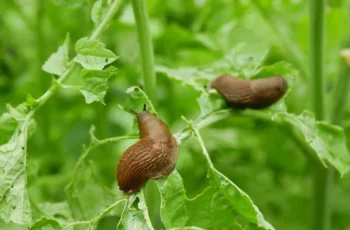Assessing Soil Health Quickly: Key Indicators and Simple Tests
Healthy soil is crucial for plant growth, agricultural productivity, and environmental sustainability. Understanding how to assess soil health quickly enables timely decisions that can improve soil conditions and enhance plant growth. Below are key indicators and methods to assess soil health effectively.

1. Visual Examination of Soil Appearance and Structure Healthy soil has a rich, dark color, indicating the presence of organic matter. If the soil appears dry, pale, or compacted, it may lack nutrients and organic matter necessary for plant growth. Soil texture is also important. Well-structured soil crumbles easily in the hands, promoting root penetration and moisture retention. Sandy soil may lack water retention, while sticky or compacted soil could indicate poor drainage.
2. Earthworm Activity as an Indicator Earthworms are key indicators of a healthy soil ecosystem. The presence of numerous earthworms suggests good organic content and aeration. A lack of worms might signal compacted soil or poor drainage, which can hinder plant growth.
3. Hand Squeeze Test for Moisture and Texture To test soil texture and moisture retention, squeeze a handful of soil. If it forms a loose clump that crumbles easily, it has a balanced texture. If it’s tightly packed or falls apart easily, it may have drainage or moisture retention issues.
4. Smelling the Soil for Microbial Activity The smell of soil can indicate microbial health. A fresh, earthy scent suggests active microbial life, while a sour or rotten smell may point to poor drainage or excess decomposition of organic material.
5. pH Levels for Nutrient Availability Soil pH affects nutrient absorption. A pH test, either with a digital meter or pH strips, provides quick insight into the soil’s acidity or alkalinity. Most plants thrive in soils with a pH between 6.0 and 7.5. Adjustments can be made by adding lime (to raise pH) or sulfur (to lower pH).
6. Soil Compaction Test with a Penetrometer Soil compaction can restrict root growth and water movement. Using a penetrometer to measure resistance provides a quick indication of compaction. If the penetrometer moves easily, the soil is well-aerated; if not, aeration methods like tilling or adding organic matter may be needed.
7. Soil Moisture Meter for Hydration A soil moisture meter gives an instant reading of soil moisture, helping determine if irrigation is needed. Proper moisture levels are crucial for plant health, as both overwatering and underwatering can be harmful.
8. Soil Respiration Test for Microbial Life Soil microbial activity plays a vital role in nutrient cycling. A respiration test involves sealing soil in a jar with vinegar and baking soda. If bubbles form, it indicates the presence of microbial activity. More advanced meters can measure CO2 levels for accurate microbial data.
9. Quick Nutrient Test Nutrient test strips provide a fast way to assess soil fertility by measuring key macronutrients like nitrogen, phosphorus, and potassium. This helps identify if the soil needs additional fertilization.
10. Soil Salinity Test Excessive salt in soil can hinder plant growth. Using an electrical conductivity meter provides a fast way to assess soil salinity. High salinity requires actions like leaching with fresh water or improving drainage.
11. Water Infiltration Test To assess drainage, pour a measured amount of water onto the soil and time its absorption. Slow absorption suggests compaction or drainage issues, while fast absorption indicates well-structured soil.
12. Planting Fast-Germinating Seeds Planting fast-germinating seeds like radish or clover can serve as an indicator of soil health. Healthy, fertile soil allows seeds to germinate quickly and grow robustly. Slow or weak growth may indicate the need for amendments like compost or fertilizer.

Conclusion Soil health is essential for plant growth and productivity. Quick assessments using simple methods like visual inspections, pH testing, moisture measurement, and biological indicators provide immediate insights into soil conditions. Regular soil health assessments ensure that plants receive adequate nutrients and support, leading to productive and sustainable growing environments.

